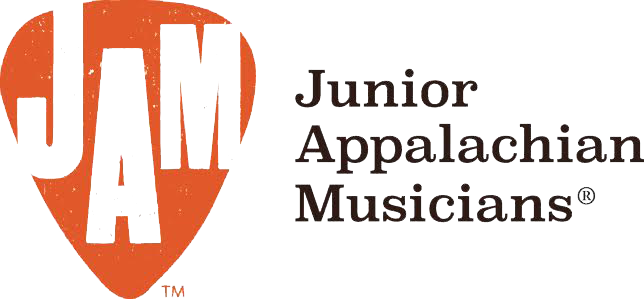We envision a world in which all children have the opportunity to experience community through the joy of participating in traditional mountain music together.
Our mission is to provide communities with the tools and support they need to teach children to play and dance to traditional old time and bluegrass music.
We believe that children who are actively engaged in traditional mountain music are more connected and better prepared to strengthen their communities for future generations.
Our footprint
Interested in starting a JAM program in your community? Click here for more information.
JAM’s core values:
- Foster local old time, bluegrass and other Appalachian mountain music and dance traditions of its community/region
- Create and maintain positive, accessible, and safe learning environments for all
- Ensure that no programs discriminate against any persons on the bases of race, color, national origin, disability, sex, gender identity, religion, reprisal, political beliefs, familial or parental status, and sexual orientation
Junior Appalachian Musicians, Inc. supports all youth traditional music education programs that meet our requirements for affiliation within our geographic service areas (150 miles of Independence, Virginia and 150 miles of Knoxville, Tennessee). Additionally, some programs have grandfathered in. JAM is currently serving more than 50 affiliated programs in Southwestern Virginia, Western North Carolina, Upstate South Carolina, Eastern Tennessee and Eastern Kentucky.
The definition of “traditional music” in this context relates to the musical and dance traditions of this region. Traditional music of this region is generally referred to by such subgenres as “Bluegrass”, “Old-Time”, “Appalachian Music”, or “Mountain Music”. The pedagogy of ethnomusicology can further relate that these styles of music are combinations of traditions originating mainly from European settlers, African slaves, and Native Americans, beginning prior to the formation of the United States of America. As such, the nature of the music taught in JAM programs is historic; many tunes and ballads can be traced back more than 600 years. This traditional music includes many historical ballads about true events, as well as those deriving from folktales. The music taught in JAM programs is also of the public domain, meaning its origination is not copyrighted and existed prior to 1923. This music includes many stories and tunes which become altered through time, with traditions including musicians incorporating outside influences into the genres. It is JAM’s goal to preserve the oral traditions as closely as possible without including any lyrics, references, or subject matter that is discriminatory. JAM’s nature of place-based education, rather, is designed to create pride in each child about being from their home Appalachian community.
Resources in print for instructors currently include the JAM Songbook, Volume 1 – Top 40 Tunes of Old Time and Bluegrass Music, the Appalachian Music Module, and JAM TIPS (Teacher Inspired Pointers and Strategies). While these items are frequently deemed to be “curriculum”, we do not require JAM affiliates to use these resources for instruction. The goal of these resources is to provide a jumping-off point and limit the need to “reinvent the wheel” for teaching materials. We also hope that the resources will motivate students to participate and learn more about the music and traditions. Song choices in these materials have derived from a variety of sources, including surveys of JAM teachers going back to 2003. More information can be found in the JAM Teaching Philosophy, developed by program founder, Helen White. It is difficult to find material from old time and bluegrass traditions that, like much of America’s history, is not complex in nature. However, all JAM instructors and directors have been included on sensitivity training during orientation and this will continue to be offered in further professional development opportunities of the future.
Once a traditional music education program is affiliated with Junior Appalachian Musicians, Inc., JAM, Inc. does not own or control the individual affiliates, which are designed to be community driven and overseen. JAM, Inc. owns the trademark “Junior Appalachian Musicians” and licenses affiliates to use the trademarked name and program model, as well as many other free resources. JAM, Inc. does not have the capacity to go into communities and meddle into community affairs or micromanage each program. JAM, Inc.’s role is to work with fiscal agents, program directors, teaching artists, advisory board members, and students/families to ensure the effective delivery of our resources.
